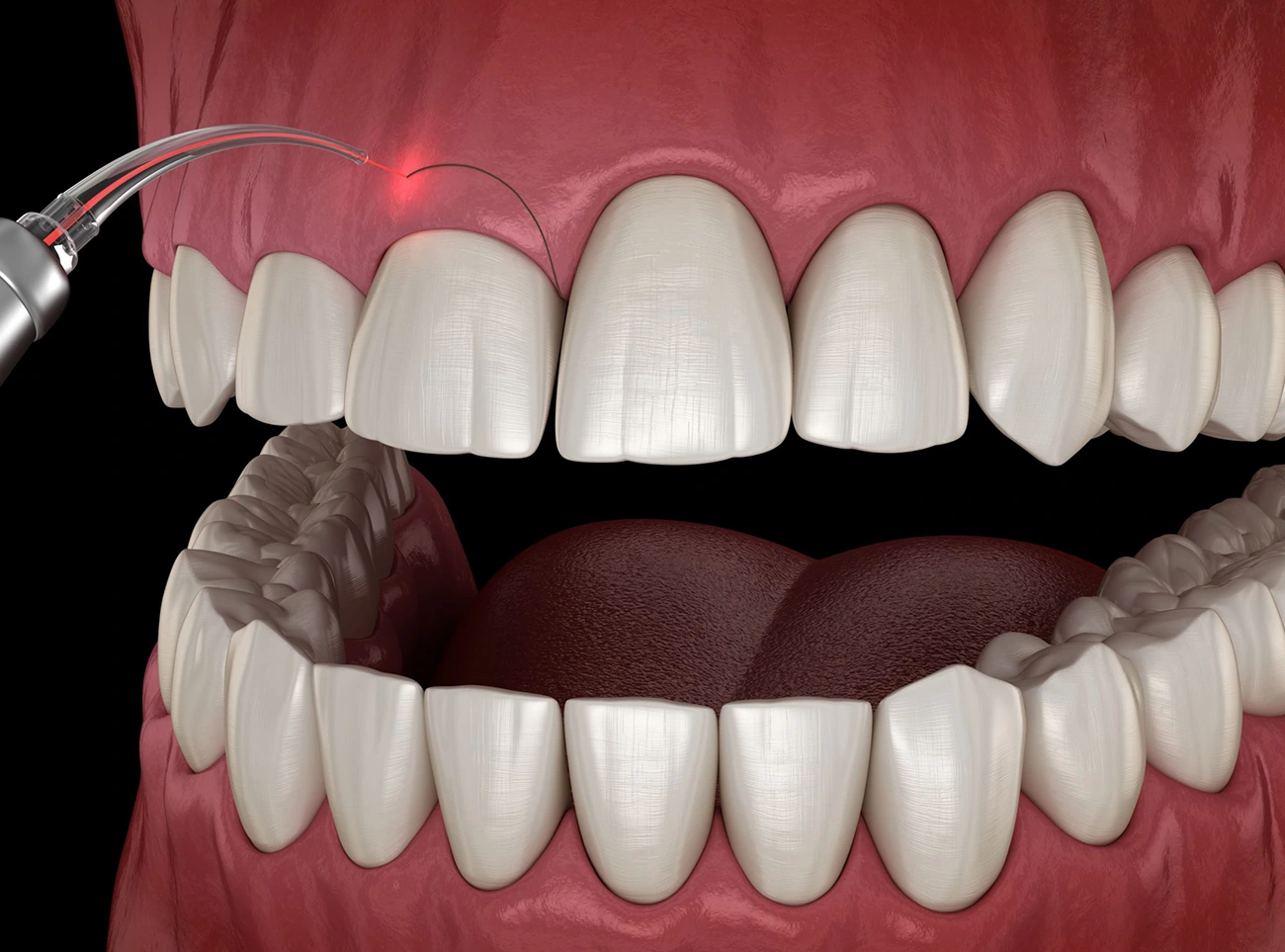COSMETIC GUM SURGERY

Laser Dentistry for Cosmetic Gum Surgery
Clarifying the basic anatomy of the tooth can be helpful in understanding what a gummy smile is. The tooth consists of two parts: the visible portion, known as the crown, and the part hidden below the gums and jawbone, known as the root. Normally, the gums cover a small portion of the crown and the root. However, in some cases where there is excessive gingival display, the gums may dominate and detract from an otherwise attractive smile. Gingivectomy is a popular treatment option among dental practitioners to correct this issue.
What is a Gingivectomy
Gingivectomy is a dental procedure that involves the removal of excess gum tissue to create a more refined gumline, which in turn exposes more of the dental crown. Recently, lasers have been increasingly used in surgical dental procedures, including gingivectomies, as a replacement for traditional scalpels.
Why Lasers?
Lasers have become a preferred choice in surgical dental procedures due to their ability to offer precision similar to traditional scalpels while also cauterizing the area to promote more effective healing and better results. Laser-assisted gingivectomies use lasers to remove excess gum tissue and recontour the gumline for a healthier and more attractive smile. Compared to traditional scalpels, laser-assisted gingivectomies cause less bleeding and pain, and patients typically experience a shorter healing time. Additionally, by adjusting the wavelength of the diode laser, dentists can vaporize gum tissue while preserving the tooth enamel.
What Conditions are Treated with Gingivectomy?
Gingivectomies can be used to correct a number of gum issues and disorders. The most common of these include the following:
Esthetic Improvements: In situations where there is excessive gingival display, laser gingivectomies are frequently utilized to remove excess gum tissue. The majority of cosmetic gingivectomies focus on the top front incisors since they are the teeth most visible when smiling.
Prior-Dental Prosthesis: In order to create a strong bond between a tooth and a crown or crown-supported bridge, a sufficient amount of tooth surface is required. Gingivectomies are often performed to remove excess gum tissue, providing adequate space for the placement of a dental prosthetic.
Treatment of Periodontitis: Periodontitis is a severe form of gum disease that affects the way gums attach to teeth. It often results in the formation of loose pockets, which can harbor harmful bacteria and make it challenging to manage the disease effectively.
Gingivectomy:The treatment of removing excess gum tissue and altering the gumline is known by several names, such as gum contouring, gum lift, gum reshaping, and gingival sculpting. This procedure, called gingivectomy, aims to transform the appearance and/or coverage of the gum line, resulting in a healthier and more attractive smile. While gingivectomy can be performed solely for cosmetic reasons, dentists may also recommend it for treating advanced gum disease (periodontitis) and other conditions that affect the gums.
What is a Gingivectomy Procedure Like?
vration of a local anesthetic to numb the area where the gingivectomy will be performed. However, local anesthetics are usually not required when lasers are used.
The excess gum tissue is then removed using a laser or scalpel. A suction tool is used to remove excess saliva from the mouth. Once the excess gum tissue has been removed, the dentist will use the laser or scalpel to refine and contour the gumline.
To promote healing, the dentist may apply gauze or a medicated compound to the gum surface. Laser-assisted gingivectomies are less likely to cause bleeding, but there may be some bleeding if a surgical scalpel is used.
CONTACT US


